
Suffolk is an independent city in Virginia, United States. As of 2022, the population was 99,179. It is the 8th-most populous city in Virginia, the largest city in Virginia by boundary land area as well as the 14th-largest in the country. Suffolk is located in the Hampton Roads metropolitan area. This also includes the independent cities of Chesapeake, Hampton, Newport News, Norfolk, Portsmouth, and Virginia Beach, and smaller cities, counties, and towns of Hampton Roads. With miles of waterfront property on the Nansemond and James rivers, present-day Suffolk was formed in 1974 after consolidating with Nansemond County and the towns of Holland and Whaleyville. The current mayor is Mike Duman.
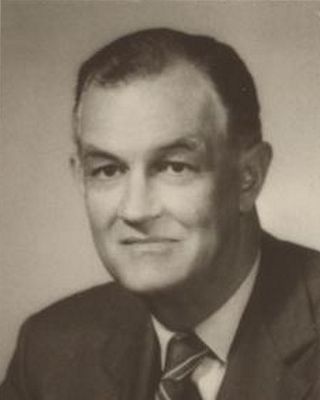
Mills Edwin Godwin Jr. was an American politician who was the 60th and 62nd governor of Virginia for two non-consecutive terms, from 1966 to 1970 and from 1974 to 1978.
Whaleyville is a neighborhood of Suffolk, Virginia, United States. It was formerly an incorporated town located in southern Nansemond County, Virginia. Whaleyville is located midway between the former county seat at downtown Suffolk and the North Carolina border along U.S. Route 13.

Charles Morrison Robinson, most commonly known as Charles M. Robinson, was an American architect. He worked in Altoona and Pittsburgh, Pennsylvania from 1889 to 1906 and in Richmond, Virginia from 1906 until the time of his death in 1932. He is most remembered as a prolific designer of educational buildings in Virginia, including public schools in Richmond and throughout Virginia, and university buildings for James Madison University, College of William and Mary, Radford University, Virginia State University, University of Mary Washington, and the University of Richmond. He was also the public school architect of the Richmond Public Schools from 1910 to 1929. Many of his works have been listed on the National Register of Historic Places.
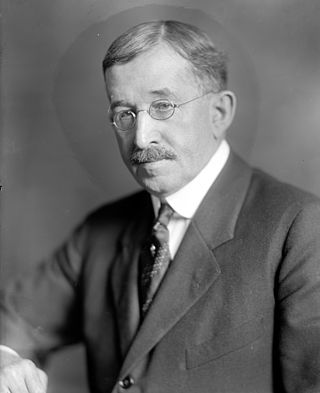
Edward Everett Holland was an American lawyer, banker, and politician who served as a U.S. Representative from Virginia from 1911 to 1921.
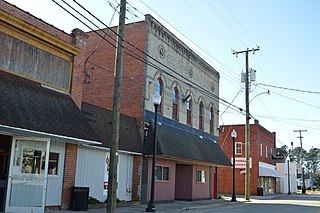
Holland Historic District is a national historic district located at Suffolk, Virginia. The district encompasses 106 contributing buildings and 1 contributing site in the crossroads community of Holland in Suffolk. The district includes a variety of turn-of-the-20th century residential styles, a smaller number of brick commercial structures, several industrial buildings along the railroad, and two churches. Most of the buildings in Holland were built after 1910. Notable buildings include Dr. Job Holland Building, the former Bank of Holland, the railroad depot, Holland Christian Church (1918), Holland Baptist Church (1922), and the William T. Holland farmhouse (1860-1880).

St. John's Church, also known as Chuckatuck Church is a historic Episcopal church located near Chuckatuck. Constructed in 1755, St. John's is the third church to occupy the site in a parish which was established in 1642. St. John's Church preserves an important role in the religious history of seventeenth century Virginia and as an architectural example of the evolving preferences of the Episcopal Church in the nineteenth century.
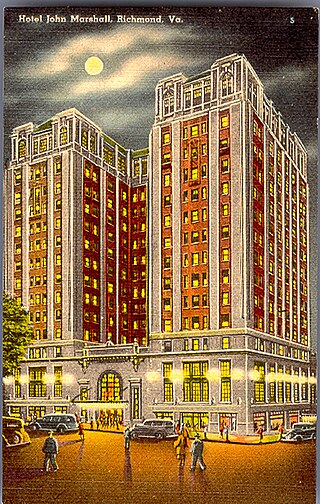
The Grace Street Commercial Historic District is a national historic district located in Richmond, Virginia. The district encompasses 93 contributing buildings located in downtown Richmond. The buildings reflect the core of the city's early 20th-century retail development and the remnants of a 19th-century residential neighborhood. The buildings are in a variety of popular 19th-century and early 20th-century architectural styles, including Classical Revival, Mission Revival, International Style, and Colonial Revival. Notable buildings include the Administration and Equipment Building for the Chesapeake & Potomac Telephone Company (1929), Thalhimer's Department Store, Atlantic Life Building (1950-1959), Miller & Rhoads Department Store, Berry-Burk Building, former W. W. Foster Studios (1927), Bank of Virginia (1949), Investment Realty Company building (1930), W.T. Grant Store (1939), Hotel John Marshall (1927), Franklin Federal Savings and Loan building (1954), and the Tompkins House (1820). Located in the district and separately listed are the Loew's Theatre, Centenary United Methodist Church, Joseph P. Winston House, Central National Bank, and National Theater.

The Main Street Banking Historic District is a national historic district located in downtown Richmond, Virginia. The district encompasses 19 contributing buildings located south of the Virginia State Capitol and west of the Shockoe Slip Historic District. It is the location of a number of buildings built for or occupied by banking institutions. The district includes representative examples of the Late Victorian and International Style architecture built between about 1865 and 1965. Notable buildings include the Virginia Employment Commission Building (1960), the 700 Building (1964), the Ross Building (1964), the Fidelity Building (1965). Located in the district is the separately listed First National Bank Building.
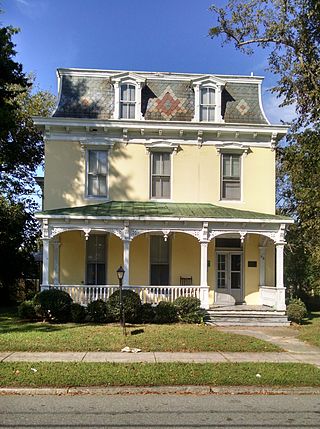
Building at 216 Bank Street, also known as Holland House Apartments, is a historic home located at Suffolk, Virginia. It was built about 1885, and is a 2+1⁄2-story, three bay stuccoed brick Second Empire style building. It has a polychromatic slate mansard roof and a full-width, one-story, hipped roof front porch. It was built for Colonel Edward Everett Holland as a single-family dwelling. It was occupied by the Suffolk Elks Lodge No. 685 from 1940 to 1965, then converted to a six-unit apartment building.

Professional Building, also known as the American Bank and Trust Company building, is a historic commercial building located at Suffolk, Virginia. It was built between 1916 and 1919, and is a seven-story, steel frame building with Pyrobar fireproofing. The building measures 35.2 feet wide by 81 feet deep. It is 80 feet tall and has Colonial Revival style architectural details.

Chuckatuck Historic District is a national historic district located at Chuckatuck, Suffolk, Virginia. The district encompasses 51 contributing buildings and 2 contributing structures in the crossroads community of Chuckatuck in Suffolk. The district includes dwellings in a variety of popular 19th and early-20th century architectural styles including Federal, Queen Anne, and Bungalow. Notable buildings include the Saunders House (1780-1820), Howell House, Cannon House, Wesley Chapel United Methodist Church (1893), W. C. Moore House, and the Gwaltney Store. Located in the district is the separately listed Godwin–Knight House.

Driver Historic District is a national historic district located at Suffolk, Virginia. The district encompasses 20 contributing buildings in the crossroads community of Driver in Suffolk. The district includes eight residences, two churches, two school structures, a lodge, an outbuilding, and five commercial structures. They are in a variety of popular 19th and early-20th century architectural styles including Federal, Queen Anne, and Colonial Revival. Notable buildings include the Parker House (1820-1840), Norfolk and Carolina Railroad depot and station master's house, Brannon House, Arthur's Store, Randy's Rods, Driver Variety Store, Beech Grove United Methodist Church, Berea Congregational Christian Church, Dejarnette High School (1926), and Harmony Lodge #149 (1938).

Whaleyville Historic District is a national historic district located at Suffolk, Virginia. The district encompasses 103 contributing buildings in the African-American community of Whaleyville in Suffolk. The district includes eight residences, two churches, two school structures, a train depot, a lodge, an outbuilding, and five commercial structures. They are in a variety of vernacular and popular turn-of-the 20th century architectural styles including Queen Anne and Bungalow. Notable buildings include the St. Stephens Holiness Church, Mineral Spring Baptist Church, Odd Fellows Lodge, McAlister Masonic Lodge, Bank of Whaleyville, and the Whaleyville Store.

Suffolk Historic District is a national historic district located at Suffolk, Virginia. The district encompasses 514 contributing buildings, 3 contributing structures, and 3 contributing objects in Suffolk. The district includes a variety of residential, commercial, governmental, and institutional buildings. They are in a variety of vernacular and popular 19th and 20th century architectural styles including Greek Revival, Queen Anne, and Bungalow. Notable buildings include the Allmond Building (1914), Macedonia A.M.E. Church, National Bank of Suffolk (1914-1920), the Old Post Office, old Nansemond County Courthouse, John Granberry house, Richard Seth Eley House (1878), Jones Building, Suffolk Towers, Virginia Apartments (1918-1920), Causey-Kendrick house (1882), Masonic Hall (1911), Suffolk High School (1922), Jefferson High School (1911), old Methodist Church (1861), St. Paul's Episcopal Church (1895), Suffolk Christian Church (1893), and Congregation of Agudath Achin. Located in the district are the separately listed Phoenix Bank of Nansemond, Professional Building, and Riddick House.

Somerton Historic District is a national historic district located at Suffolk, Virginia. Prior to annexation in 1974 Somerton was part of now non-existing Nansemond County. The district encompasses 15 contributing buildings and 2 contributing sites in the rural village of Somerton in Virginia. The district was a 250 acre 17th century grant to Sir Thomas Jernigan a colonist from Somerleyton in Suffolk County. England. The district includes an 18th-century ordinary, a 19th-century church, and modest dwellings dating from the 18th, 19th, and 20th centuries surrounded by large agricultural fields. The buildings are in a variety of popular architectural styles ranging from Federal to Folk Victorian. Notable buildings include the Somerton United Methodist Church and cemetery, Washington Smith Ordinary, and Ellis General Store.

West End Historic District is a national historic district located at Suffolk, Virginia. The district encompasses 201 contributing buildings and 93 contributing structures in a primarily residential section of the city of Suffolk. The district includes buildings dating from the last decade of the 19th century through the first four decades of the 20th century in a variety of popular architectural styles including Queen Anne and Folk Victorian. The residences were developed to support the growing upper-, middle-, and working-class populations. Notable buildings include the J. C. Causey, Jr. House, Oxford United Methodist Church (1922), and West End Baptist Church (1938).

Bay Point Farm, also known as the Bay Point Dairy Farm, the Obici House, and Sleepy Hole Golf Course, is a historic home and dairy farm located at Suffolk, Virginia. The main house is an irregularly planned Italian Renaissance style house overlooking the Nansemond River. It is a two-story, single-family dwelling, with the original section dated to about 1870. The two end blocks were added in 1925 and have hipped roofs. Associated with the house are the garage, a silo, storage building, large farm building, and small shed. Bay Point Farm was the home of Amedeo Obici, the Planters Nut and Chocolate Company founder. Obici purchased Bay Point Farm in 1924 and remained in Suffolk at Bay Point Farm until his death in 1947.

East Suffolk Complex is a historic school complex for African-American students located at Suffolk, Virginia. The complex consists of the East Suffolk Elementary School (1926–1927), East Suffolk High School (1938–1939), and the Gymnasium building (1951).
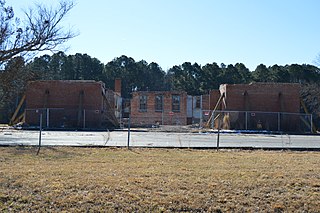
Nansemond County Training School, also known as Southwestern High School, is a historic Rosenwald School for African-American students located at Suffolk, Virginia. It was built in 1924, and is a one-story building consisting of a central block with a recessed covered porch and flanking wings. It is capped with a tin hipped roof. Also on the property is the contributing cafeteria building that was later used as an extra classroom. It was built to house the first public black high school in Nansemond County, Virginia, and included both the primary and secondary grades. The school closed following the 1969–70 school year.























